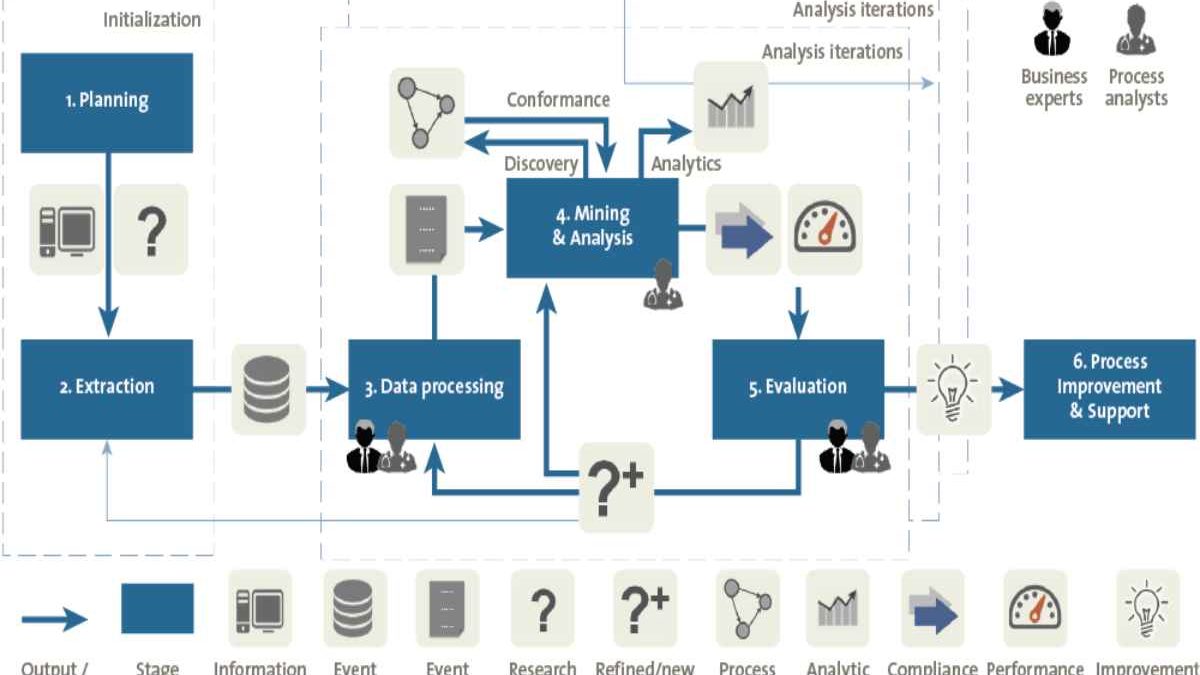Optimizing your business operations by analyzing historical data is crucial for ensuring efficiency and adherence to standards. In this regard, process mining tools come in handy, providing valuable insights into your workflows and helping identify areas for improvement. Selecting the right process mining software can significantly impact your business’s success. Here are five crucial tips to guide your decision-making process.
1. Evaluate Integration Capabilities
Process mining involves analyzing detailed data within your operational systems. Hence, ensuring your software can seamlessly integrate with your existing business intelligence tools like Power BI and other critical systems is crucial. Smooth integration allows for comprehensive data collection and avoids disruptions in daily operations.
Seamless integration of Process Mining Tool streamlines data gathering from multiple sources, providing a holistic view of business processes. That minimizes data movement and reduces implementation complexity by avoiding the need for separate software. Key data sources include operational logs, transaction records, and system interactions, all crucial for accurate process analysis and optimization.
2. Assess User-Friendliness and Customization
A simple-to-use process mining software is crucial for seamless onboarding and enhanced efficiency. Look for intuitive tools that offer customization options tailored to different business needs. Easy-to-use software minimizes time spent learning functionalities, allowing employees to focus more on tasks and reduce errors. It streamlines workflows by enabling the automation of repetitive tasks, which boosts overall efficiency.
Intuitive interfaces of process mining software enhance user experience, reducing frustration and improving morale. That fosters a sense of ownership among employees, reducing reliance on IT support. Additionally, easy-to-use tools ensure faster onboarding for new hires and promote collaboration across teams, ultimately leading to lower maintenance costs and improved business outcomes.
3. Examine Real-Time Monitoring and Reporting Capabilities
Real-time monitoring and reporting are crucial functionalities of process mining software. Real-time monitoring provides immediate visibility into process performance, enabling business unit heads and other leaders to detect and address issues promptly. Timely insight helps maintain operational efficiency and ensures that processes remain aligned with organizational goals.
Look for software that offers comprehensive analysis features such as process visualization with swim lane diagrams, filtering options, and lead time analysis. These features help identify bottlenecks and inefficiencies, allowing for targeted improvements and optimal resource allocation.
An effective alert system further enhances the tool’s utility by notifying business stakeholders of deviations, thus facilitating proactive management and decision-making. Look for a tool that allows you to book a free trial demo to test its functionality and user experience before committing to a purchase.
4. Consider Scalability and Support
Committing to process mining software that grows with you is essential for effectively monitoring your evolving business needs without compromising performance. Scalability ensures the tool can seamlessly expand alongside your operations, handling increased data volumes efficiently.
Equally crucial is robust vendor support, guaranteeing timely resolution of any issues that may arise. This dual focus future-proofs your investment, ensuring ongoing usability and reliability. You can confidently select a process mining tool that meets your long-term business objectives by evaluating scalability features and vendor support capabilities through documentation and user reviews.
5. Look for Advanced Analytical Features
Look for process mining tools incorporating advanced analytical features like predictive modeling, conformance checking, and variant analysis. These capabilities are crucial for gaining deeper insights into process efficiency, compliance with standards, and areas for improvement.
For example, predictive modeling helps forecast outcomes based on historical data, while conformance checking ensures adherence to predefined rules. Variant analysis identifies deviations in process flows, pinpointing areas where optimization is needed. Additionally, tools with process simulation capabilities allow organizations to assess the possible impact of suggested changes before implementing them, enhancing strategic decision-making and operational efficiency.
In conclusion, choosing a process mining tool that fits your business objectives and operational needs is crucial for achieving sustainable efficiency gains and process improvements. A proactive and strategic approach ensures that the tool is dynamic, compatible with your existing systems, and capable of meeting specific challenges in business processes. However, selecting a process mining software vendor with a solid reputation for reliability, robust customer support, and a good track record is essential for maximizing the tool’s effectiveness and ensuring long-term success in process optimization initiatives.

